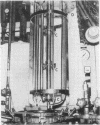Abstract
A model system is described for the mass propagation of Rift Valley fever (RVF) virus, utilizing large-volume fermentor units for suspension culture of tissue cells and the subsequent production of virus. Comparisons between laboratory- and fermentor-scale operations of tissue cell growth gave equivalent results. Cell viability dropped 24 to 30 hr postinfection with a subsequent virus yield between 108.0 and 109.0 mouse intracerebral median lethal doses per milliliter. Infecting volumes of tissue cell culture (20- or 40-liter working volumes) had no apparent effect on virus yields. Tissue cells grown under either oxidation-reduction potential- and pH-controlled or uncontrolled conditions showed little or no difference in their ability to produce RVF virus. We believe this tissue cell virus process to have potential application for large-scale production of vaccines for human or veterinary use or for the mass propagation of certain carcinogenic viruses for cancer research, once use of established lines for this purpose is accepted.
Full text
PDF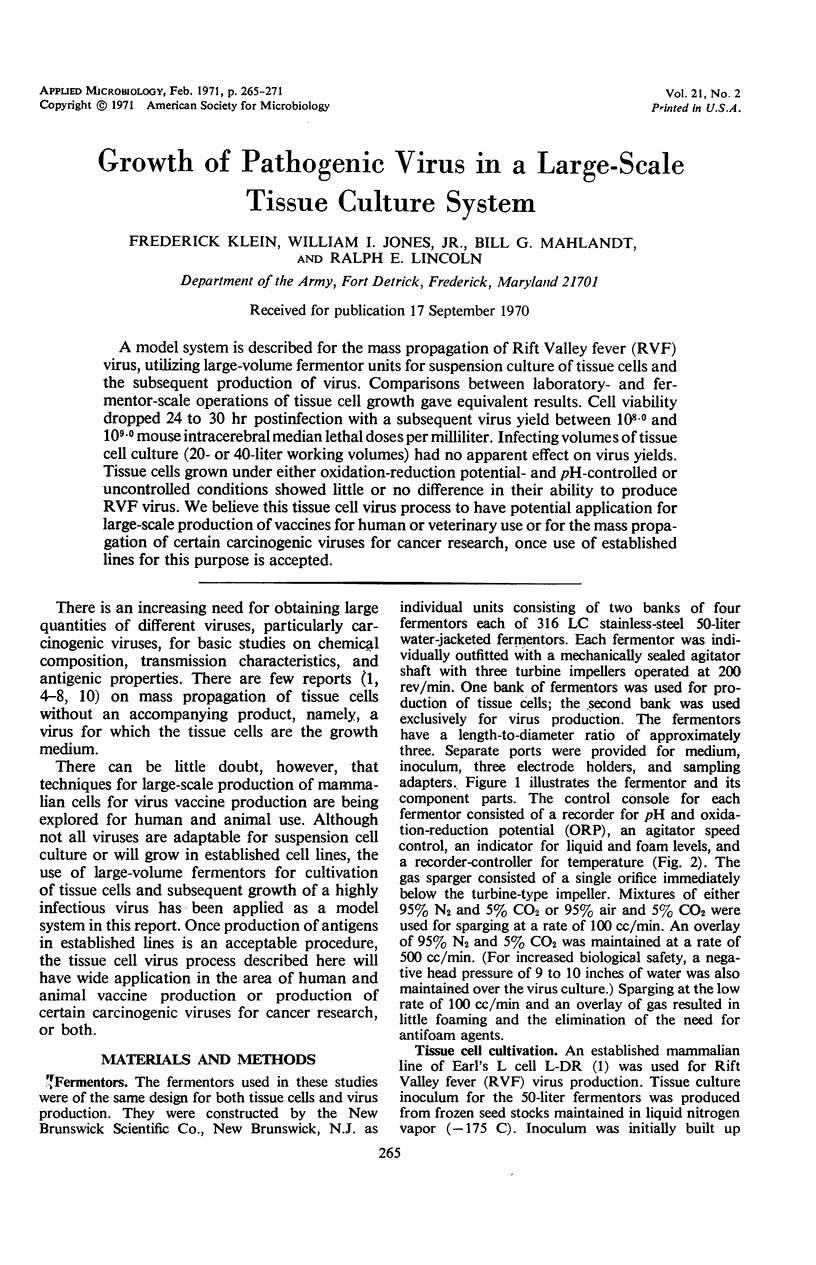
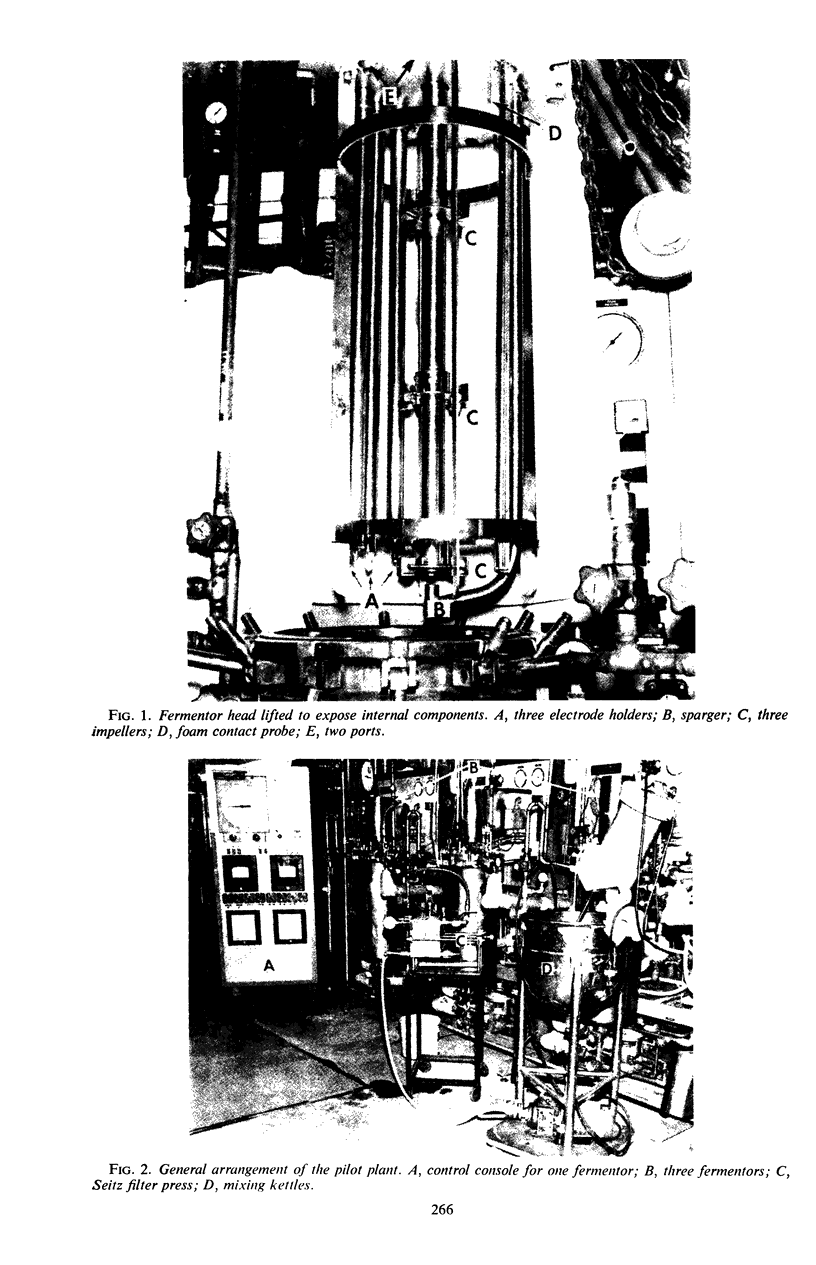
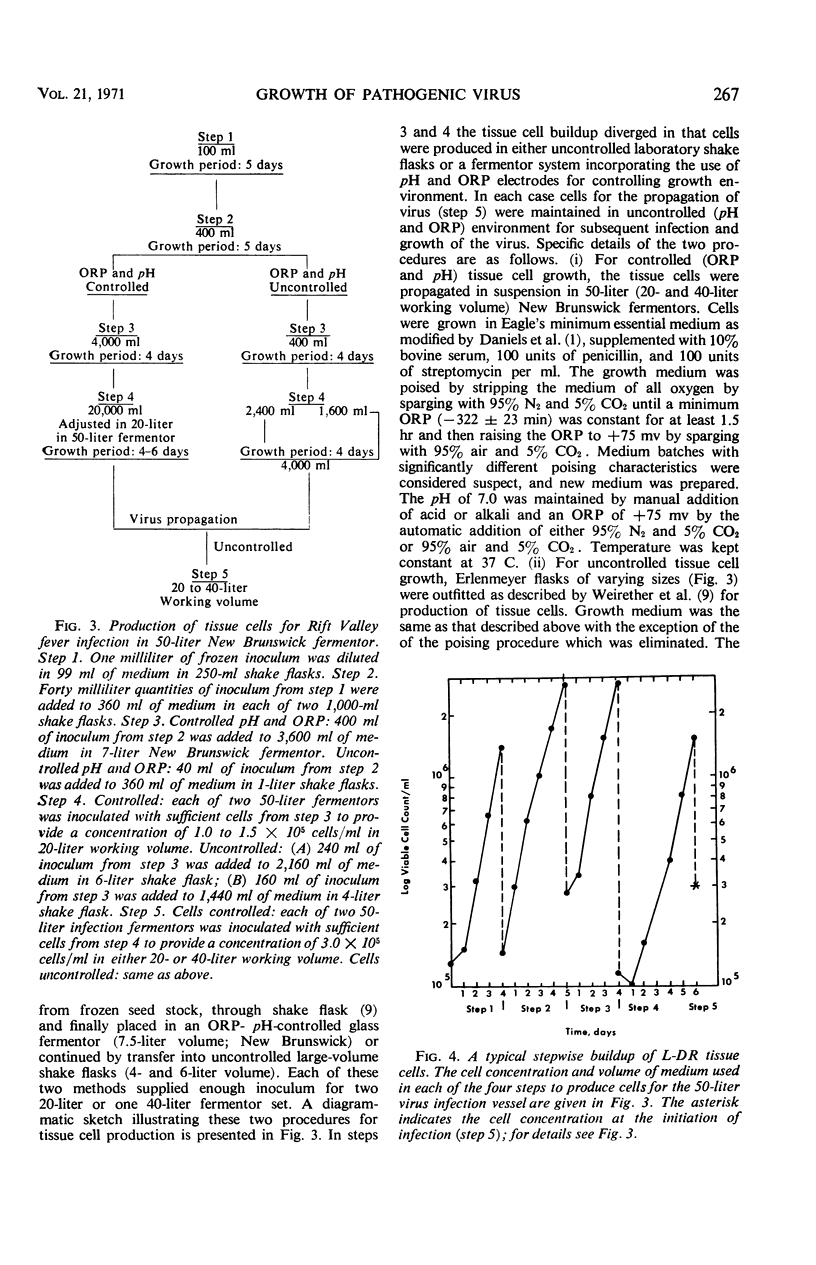
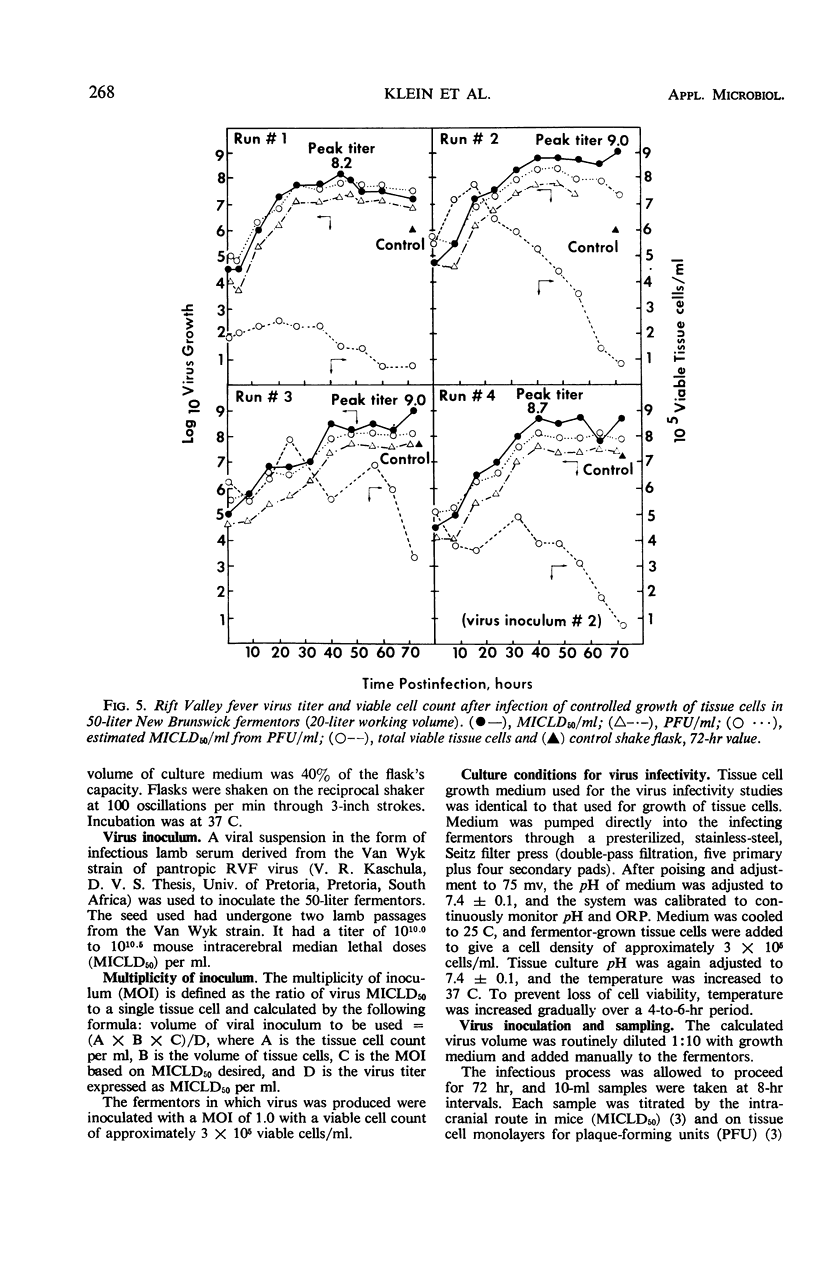
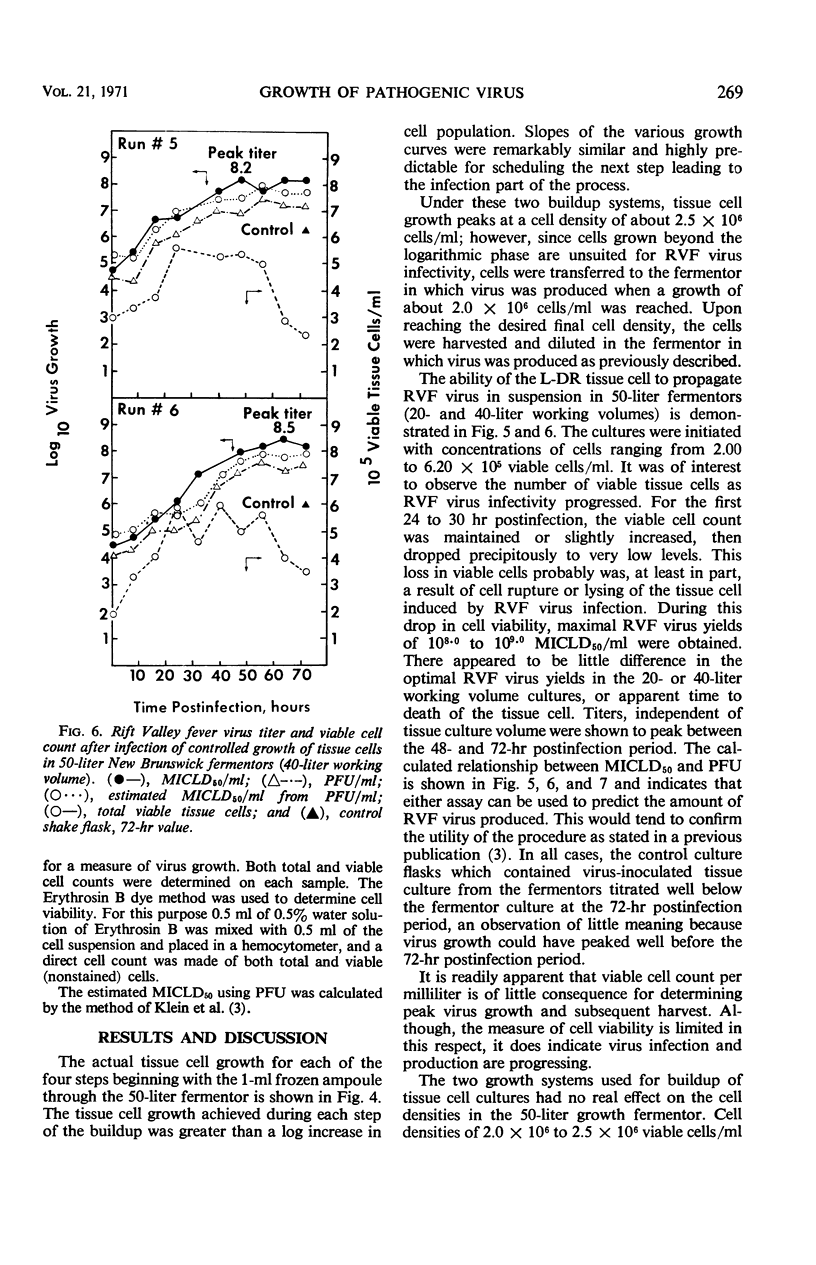
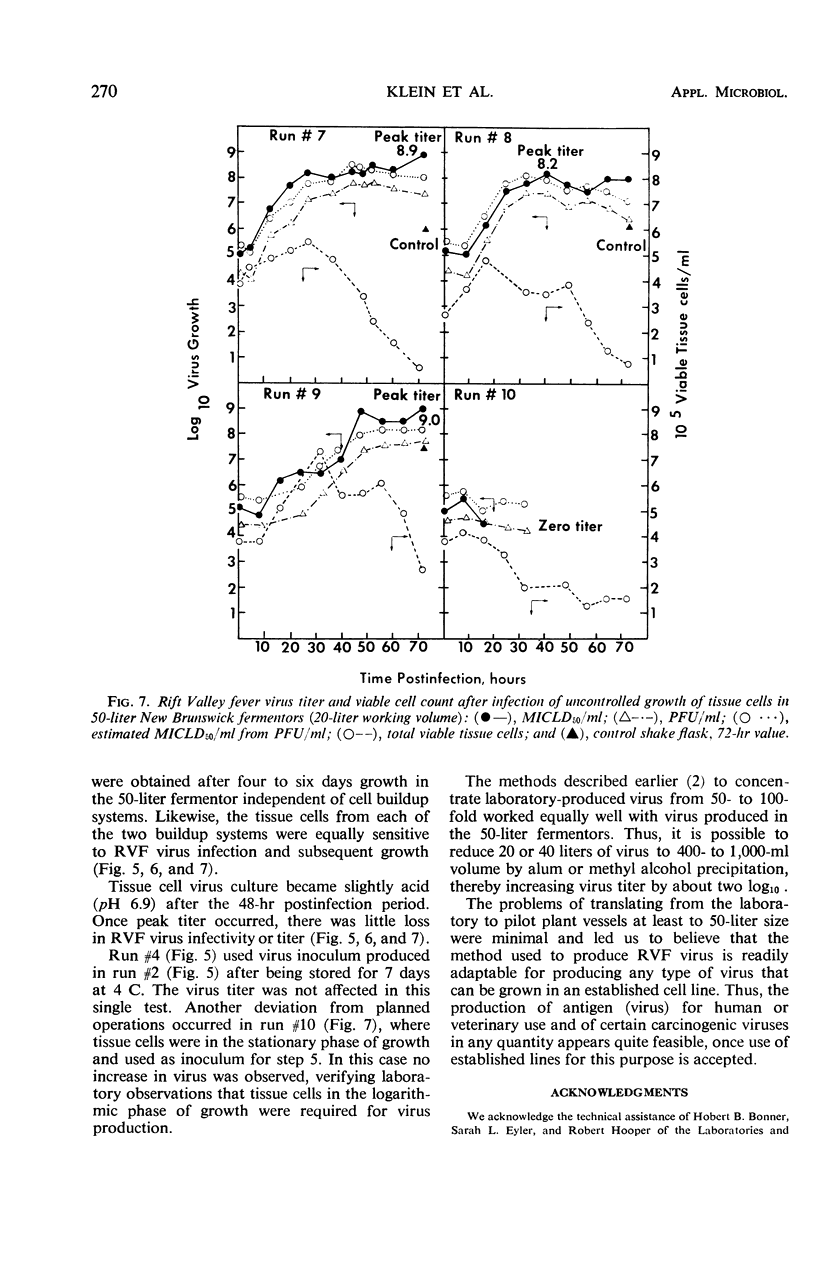
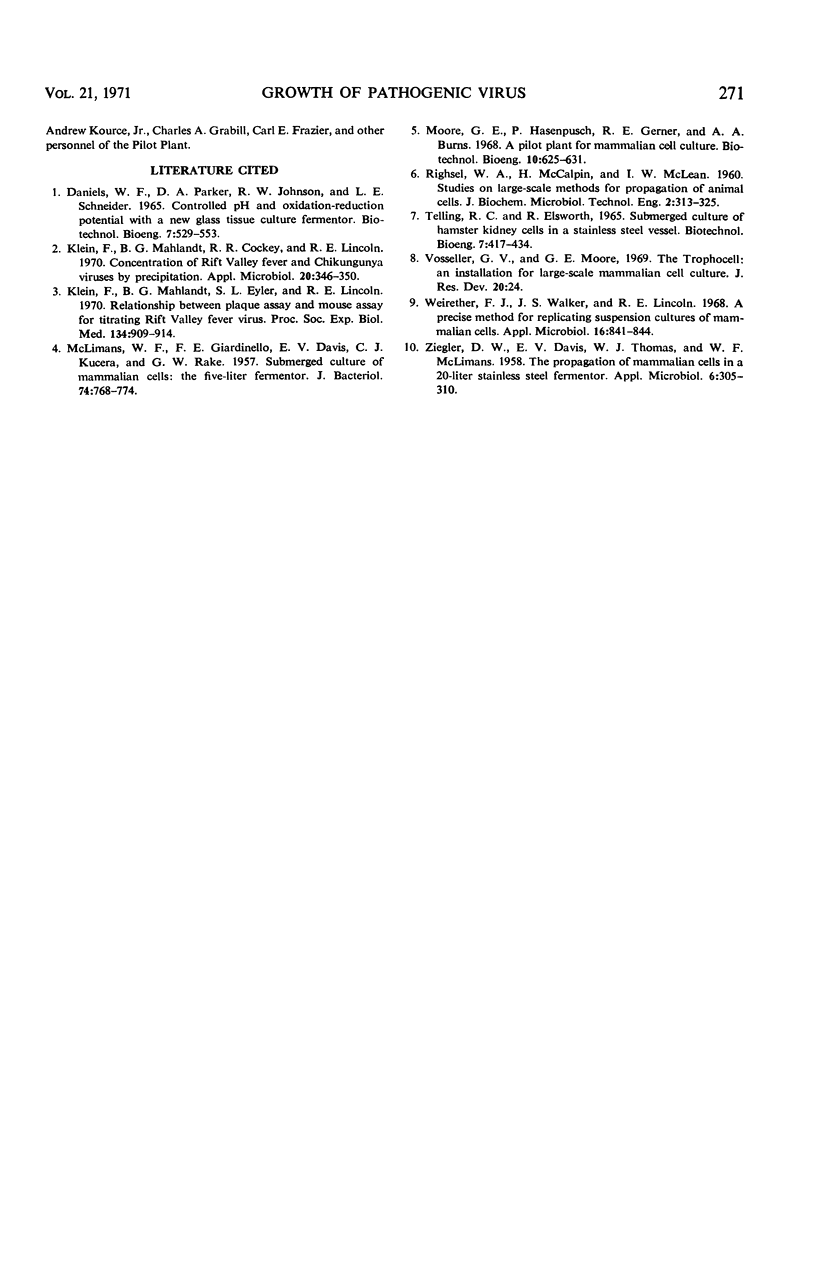
Images in this article
Selected References
These references are in PubMed. This may not be the complete list of references from this article.
- Klein F., Mahlandt B. G., Cockey R. R., Lincoln R. E. Concentration of Rift Valley fever and Chikungunya viruses by precipitation. Appl Microbiol. 1970 Sep;20(3):346–350. doi: 10.21236/ad0868151. [DOI] [PMC free article] [PubMed] [Google Scholar]
- Klein F., Mahlandt B. G., Eyler S. L., Lincoln R. E. Relationship between plaque assay and the mouse assay for titrating Rift Valley fever virus. Proc Soc Exp Biol Med. 1970 Sep;134(4):909–914. doi: 10.3181/00379727-134-34908. [DOI] [PubMed] [Google Scholar]
- McLIMANS W. F., GIARDINELLO F. E., DAVIS E. V., KUCERA C. J., RAKE G. W. Submerged culture of mammalian cells: the five liter fermentor. J Bacteriol. 1957 Dec;74(6):768–774. doi: 10.1128/jb.74.6.768-774.1957. [DOI] [PMC free article] [PubMed] [Google Scholar]
- Weirether F. J., Walker J. S., Lincoln R. E. A precise method for replicating suspension cultures of mammalian cells. Appl Microbiol. 1968 Jun;16(6):841–844. doi: 10.1128/am.16.6.841-844.1968. [DOI] [PMC free article] [PubMed] [Google Scholar]
- ZIEGLER D. W., DAVIS E. V., THOMAS W. J., MCLIMANS W. F. The propagation of mammalian cells in a 20-liter stainless steel fermentor. Appl Microbiol. 1958 Sep;6(5):305–310. doi: 10.1128/am.6.5.305-310.1958. [DOI] [PMC free article] [PubMed] [Google Scholar]



